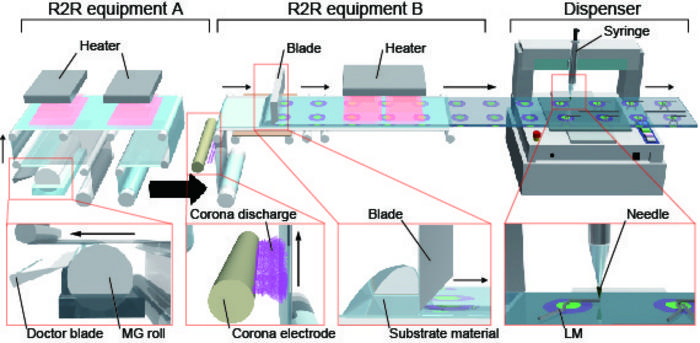Study demonstrates how ‘coming home’ produces a signal of comfort in mice

Credit: Florida Atlantic University
By monitoring a well-replicated biomarker associated with reward, a study by neuroscientists from Florida Atlantic University provides evidence that the old adage, “There’s no place like home,” has its roots deep in the brain. The study demonstrates that a signal for pleasure – dopamine – rises rapidly when mice are moved from a simple recording chamber to their home cage, but less so when they are returned to a cage not quite like the one they knew. Prior studies have shown that rodents will actively choose their home cage over a look-alike environment. Using a sensor for dopamine placed in the mouse brain’s key reward center, FAU scientists are the first to demonstrate that home evokes a surge of dopamine that mimics the response to a dose of cocaine.
The neurotransmitter dopamine is critical to motivational control and to directing behaviors that seek reward and have preferred outcomes. Dopamine release in the nucleus accumbens of humans and rodents, a primary site mediating natural rewards as well as addictive substances, is triggered initially by the reward itself but later occurs when reward-coupled cues are presented – a feature underlying reinforcement learning. The activity of dopamine neurons that drives dopamine release is sensitive to stimuli that signal valence and saliency and is key to motivational learning. In their report, the FAU scientists reveal that the simple act of “coming home” drives dopamine release.
For the study, researchers used a sensitive technique known as fiber photometry to capture the second-to-second changes in dopamine in the mouse nucleus accumbens. Results of the study, published in the journal Neurochemistry International, reinforce the importance of the brain system in substance misuse. Addiction is key to everyday pleasures, and anatomically-speaking, the researchers say that “home is where the brain is.”
“Our data provide clear evidence of a biochemical foundation for the reinforcing properties of home cage return. This simple environmental manipulation can provide a minimally-invasive approach to peel away aspects of reward circuitry connected to natural reinforcers – one that is critical to an animal’s survival,” said Randy Blakely, Ph.D., senior author, executive director of FAU’s Brain Institute and a professor of biomedical science in FAU’s Schmidt College of Medicine. “We think that monitoring the home cage-elicited release of dopamine provides a simple, but powerful paradigm for the study of how genetic and life events can lead to an inability to feel pleasure. The inability to feel pleasure is a major characteristic of mood disorders, and a simple test for the efficacy of medications or other treatments. The field of drug discovery needs simple, biomarker-based analogs of behavioral changes seen in people with mood disorders since we can’t ask a mouse how it feels.”
The researchers questioned whether their findings reflected leaving an unappealing environment or if it truly was a response to the positive aspects of a known and safe environment. Therefore, they examined whether dopamine surges arise when the mice were relocated from the plexiglass recording chamber to a clean cage with natural bedding matching the one they had been living in prior to the study. Indeed, dopamine release occurred, however, this release was not as large as that observed when mice were transferred to the home cage and the dopamine surge was not as sustained.
“We weren’t really exploring home cage effects,” said Felix Mayer, Ph.D., a post-doctoral fellow in Blakely’s lab and lead author of the study. “However, we were struck as to how reliable the manipulation was in evoking dopamine release particularly when placed in the context of little or no rise in dopamine when the mice were moved from the home cage to the test chamber. We are excited now to see if the genetic models of brain disorders we study will impact this effect.”
###
Study co-authors are research associate professor Hideki Iwamoto, Ph.D.; research associate professor Maureen K. Hahn, Ph.D.; research assistant Gregory J. Grumbar, Ph.D.; and research assistant professor Adele Stewart, Ph.D., all members of FAU’s Department of Biomedical Science. Yulong Li, Ph.D., developer of the dopamine sensor used in the study and a faculty member of the School of Life Sciences, Peking University, Beijing, also was a co-author.
The research was supported by the National Institutes of Health (MH105094 awarded to Blakely.)
About the FAU Brain Institute:
Inaugurated in 2016 on the John D. MacArthur Campus in Jupiter, Fla., the FAU Brain Institute, supports research, education and community outreach among more than 100 faculty level researchers at FAU and its affiliate research centers. One of FAU’s four pillars that guide the University’s goals and strategic actions, the Institute seeks to unlock the secrets of brain development, function and plasticity and how the mechanisms uncovered can be compromised to drive devastating brain disorders. From the study of neuronal development and signaling to investigations of brain diseases including addiction, autism, Parkinson’s and Alzheimer’s disease, researchers from FAU’s Brain Institute seek to generate knowledge that benefits society. For more information about the Institute and its members, visit http://www.
About Florida Atlantic University:
Florida Atlantic University, established in 1961, officially opened its doors in 1964 as the fifth public university in Florida. Today, the University, with an annual economic impact of $6.3 billion, serves more than 30,000 undergraduate and graduate students at sites throughout its six-county service region in southeast Florida. FAU’s world-class teaching and research faculty serves students through 10 colleges: the Dorothy F. Schmidt College of Arts and Letters, the College of Business, the College for Design and Social Inquiry, the College of Education, the College of Engineering and Computer Science, the Graduate College, the Harriet L. Wilkes Honors College, the Charles E. Schmidt College of Medicine, the Christine E. Lynn College of Nursing and the Charles E. Schmidt College of Science. FAU is ranked as a High Research Activity institution by the Carnegie Foundation for the Advancement of Teaching. The University is placing special focus on the rapid development of three signature themes – marine and coastal issues, biotechnology and contemporary societal challenges – which provide opportunities for faculty and students to build upon FAU’s existing strengths in research and scholarship. For more information, visit http://www.
Media Contact
Gisele Galoustian
[email protected]
Related Journal Article
http://dx.





